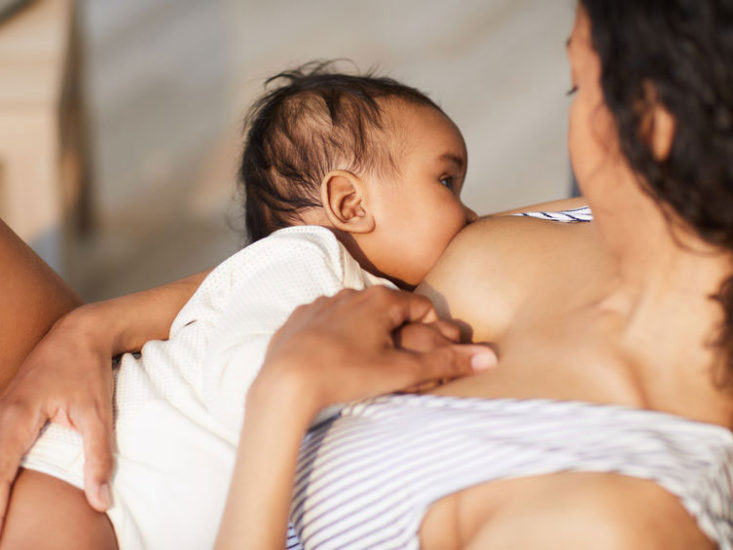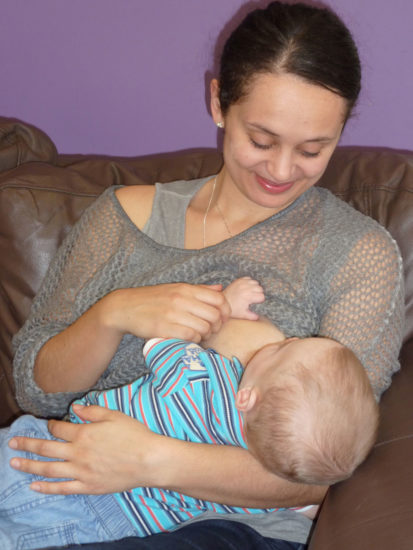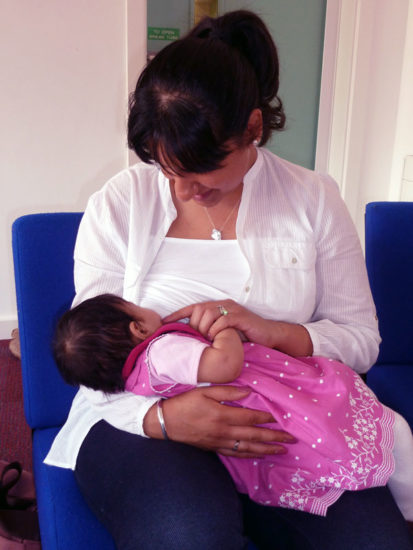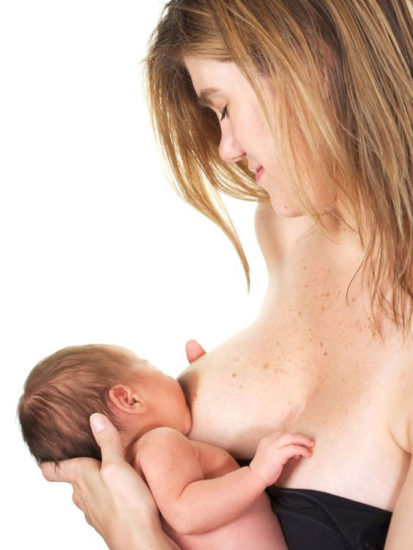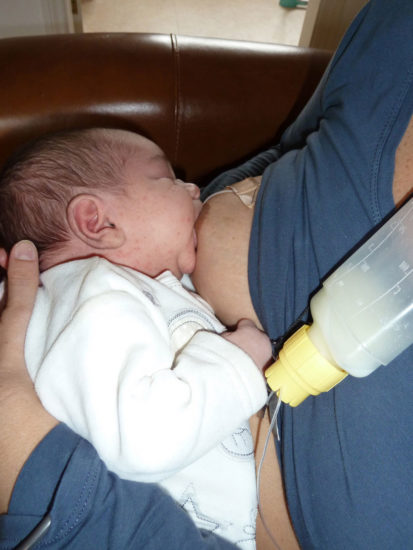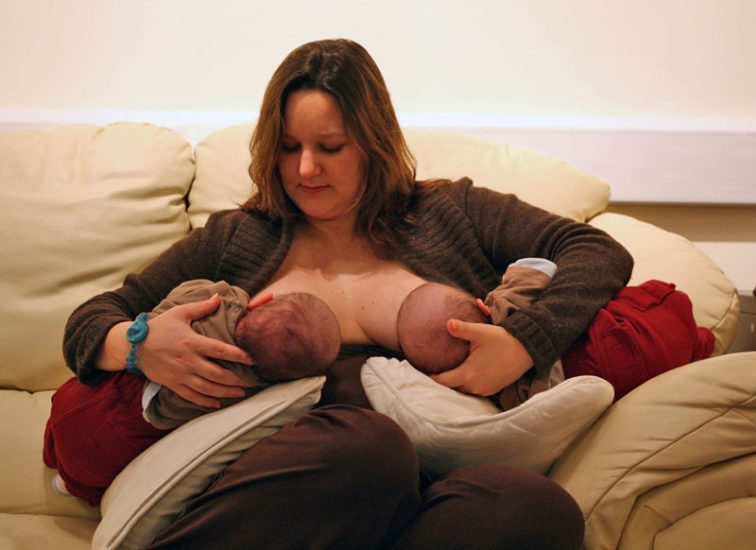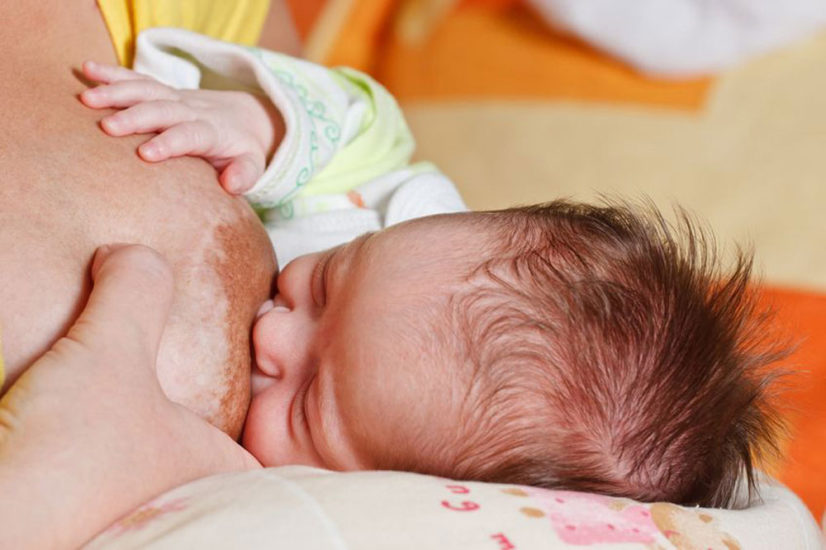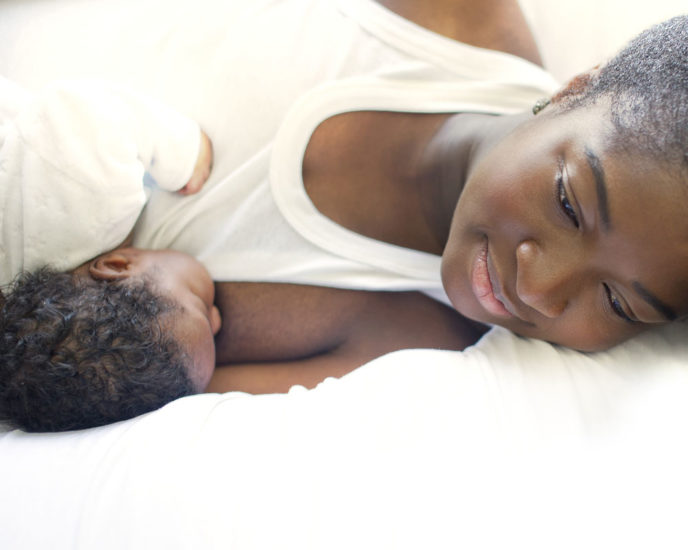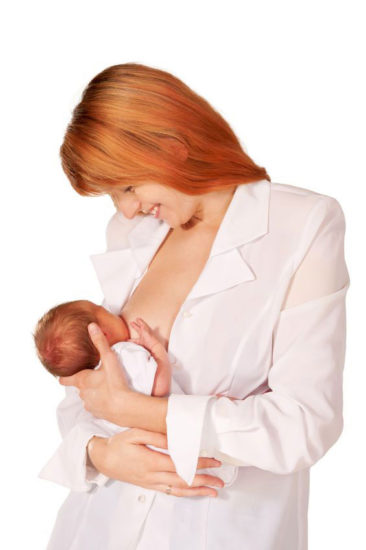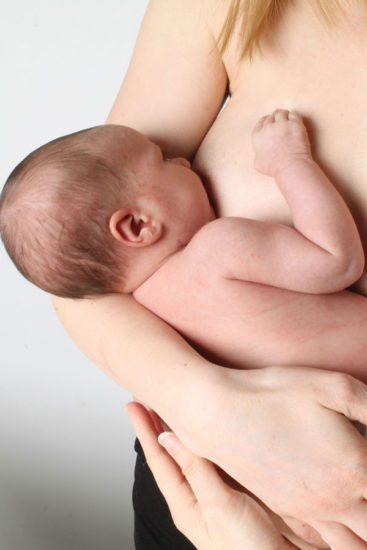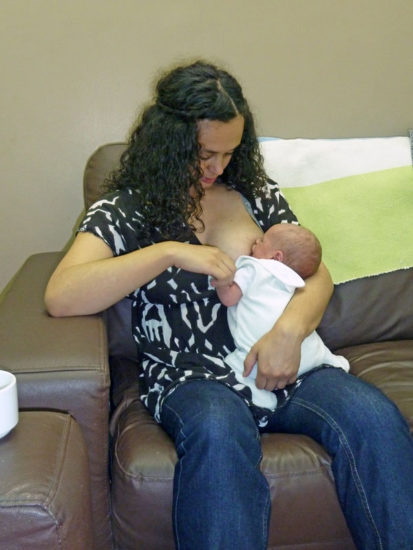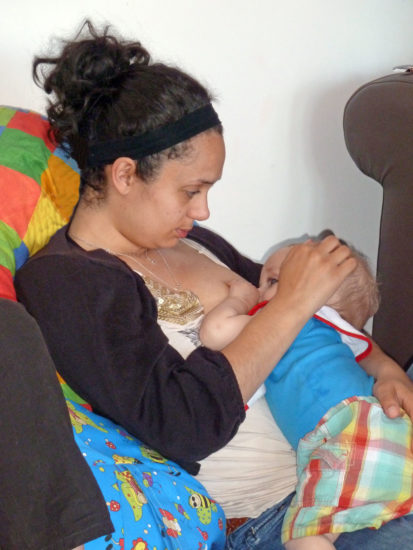As long as breastfeeding feels comfortable and your baby is getting plenty of breast milk, it doesn’t matter which position you prefer to use. This article describes some of the more popular breastfeeding positions for newborns and you can find more ideas for helping your baby attach (latch) to the breast comfortably in Latching Tips or see clips of mothers breastfeeding in Breastfeeding Videos.
As long as breastfeeding feels comfortable and your baby is getting plenty of breast milk, it doesn't matter which position you prefer to use.Click To TweetNatural or laid-back breastfeeding
Baby mammals are hard-wired to breastfeed without any help—by using their reflexes and instinctive behaviours. By contrast, human babies can often seem helpless to overcome difficulties with attaching (latching) to the breast. However, when a mother reclines with her baby on her tummy, human babies are often able to use their natural instincts to crawl to the breast and latch on comfortably, just like other baby mammals. This type of position is sometimes called natural breastfeeding or laid-back breastfeeding. Skin-to-skin contact in this position, while not essential, also has many benefits to help the process of self-latching. If you place your baby between your breasts as you semi-recline (lean back) into a chair, your body will take your baby’s weight and you will notice he starts to bob about searching for the nipple using all his senses. You can still guide him and help him to latch. Many mothers find this is a comfortable way to breastfeed.
Cradle hold
In a cradle hold, baby is held in the crook of the arm in a similar position to how a baby is held for bottle feeding—but baby is turned on their side snuggled against their mother and facing the breast. Check your baby doesn’t have to turn their head to reach the breast as it is not easy to swallow if your head is turned to the side and this would make breastfeeding difficult. The cradle hold may be more challenging to use initially, when you and your baby are learning to breastfeed, as it gives you less control for the latch. Check that your baby feels safe and supported in this position and that his legs aren’t dangling off the side of your lap. Try to curl his body around yours following all the latching tips you can. Leaning back and letting your body take your baby’s weight can help the stability of this position.
Cross-cradle hold
Cross-cradle is similar to cradle hold. Instead of cradling your baby in the arm on the same side as the breast they are nursing from, baby is cradled by the opposite arm with the opposite hand supporting the base of their neck and shoulders. Your other hand will be free to shape or support the breast if needed and this can give you more control for the latch—see Latching Tips. Avoid holding the back of your baby’s head in this position. If you lean back slightly during the latch or after baby is latched, your body can help support your baby’s weight. Although this hold works well for many mothers, one Australian study found that cross-cradle was associated with more nipple pain.1 As with all positions, what works well for one mother may not work for another.
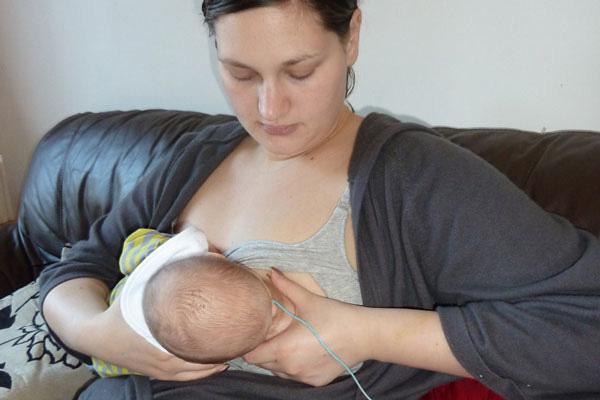
Rugby, clutch or football hold
Rugby, clutch or football hold all refer to holding your baby in an underarm position at your side. The rugby hold can be useful if you have had a caesarean and your incision is painful in other positions, or if you’re feeding two babies at the same time. You may need a cushion or two behind your back to bring yourself forward to make enough room for your baby’s body along your side. Check that your baby’s nose is level with your nipple before he latches. A firm pillow under your baby may be needed to lift him to the right height so that he can reach the breast. In this hold, your baby’s bottom might be snuggled into the back of the chair or sofa with his legs in the air. As with cradle or cross-cradle you have a hand free to shape or support the breast if needed.
Side-lying
Learning to breastfeed lying down gives you an opportunity to rest and can be very comfortable if you have had an episiotomy or caesarean. It can be tricky to do; at first it may help to latch in a semi reclining position and then slide down to side-lying. Check out Bed-Sharing With Baby to make sure your sleeping surface is safe if you should fall asleep while feeding. As in all positions, have your baby snuggled in close with his nose level with your nipple just before the latch. Check that he isn’t flat on his back and expected to turn his head to latch, he won’t be comfortable or able to swallow in that position. Your arm around him will keep him on his side while he feeds.

Standing up
Sometimes a baby can be upset and too anxious, frustrated or angry to latch—walking around with him in your arms will often calm him. He may even enjoy latching while you are standing up, with some gentle swaying and movement rocking him. Later, breastfeeding standing up, with the help of a sling, can let you carry on with tasks around the house without interrupting your baby’s feed. Breast and Bottle Feeding Safely in a Sling by Dr Rosie Knowles discusses how to use a sling safely and see the sling wearing tips on The School of Babywearing’s website or Baby Slings from The Royal Society for the Prevention of Accidents.
Straddle hold
In a straddle hold, baby sits astride his mother’s thigh facing the breast. You might sit upright or in a reclining straddle hold which is a variation of a laid back hold.
Choosing your position
How you hold your baby to feed affects how well they can attach to the breast. Some positions may seem easier and more comfortable than others and you may find you prefer to use a different position on each breast. For instance a mother may prefer cradle hold, or cross-cradle hold on one breast and rugby hold on the other. Choose whichever position works best for you.
If breastfeeding hurts
If you can’t get comfortable in any position, contact a breastfeeding helper or IBCLC lactation consultant to help you with positioning in person. Your lactation consultant will help you find the best positions for yours and your baby’s unique anatomy and circumstances. The articles Latching Tips, Causes of Sore Nipples and Why Does Breastfeeding Hurt? may also be useful.
Summary
There are lots of different breastfeeding positions to try and as long as you are comfortable and your baby is feeding well, it doesn’t matter which one you choose. However, if breastfeeding hurts or pinches your nipples, not only will it be uncomfortable and cause sore nipples, but your baby may find it difficult to take the full amount of breast milk he needs. If this happens, your milk supply may begin to drop because your breasts will not be being emptied properly. Holding your baby in a way that helps him get a deep mouthful of breast tissue as well as the nipple, while feeling safe and supported, is the key to comfortable feeds and plenty of breast milk. If you are struggling to find a comfortable position, a breastfeeding specialist can help you.
